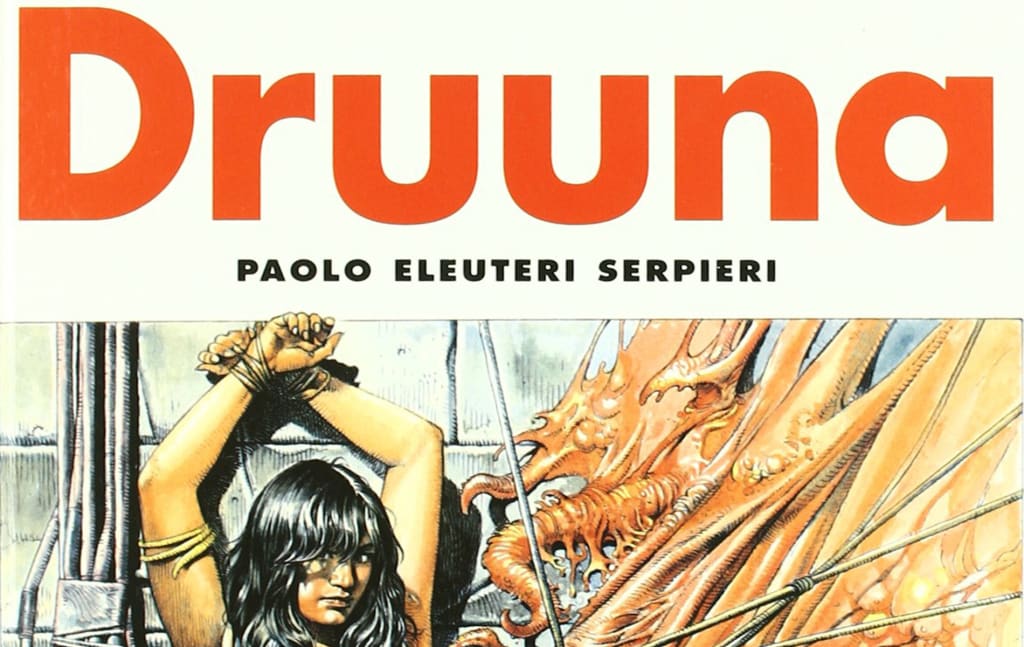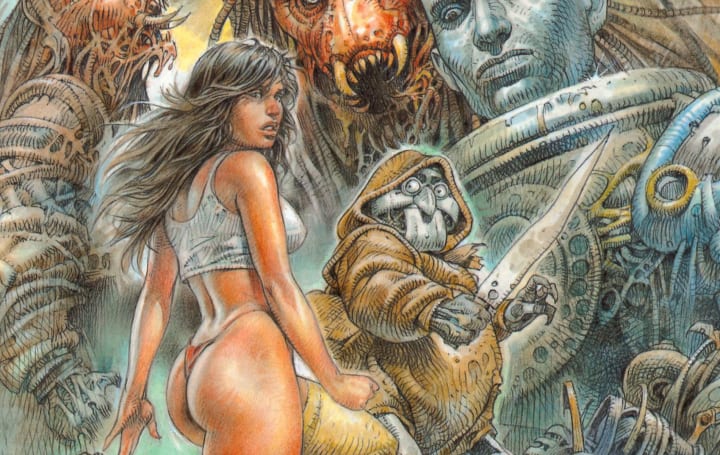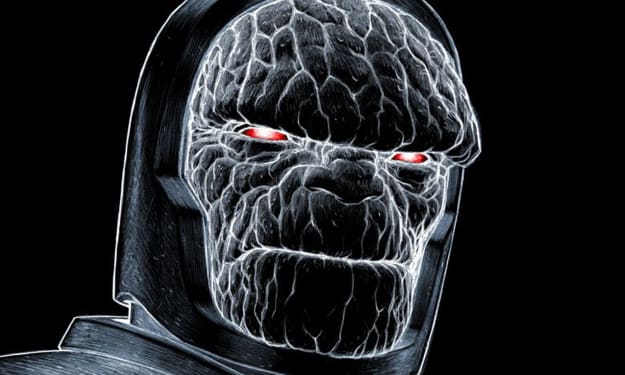Serpieri's 'Druuna'
Explicit artwork and storytelling from the "Master of Ass."

In 1985, Italian comic book artist Paolo Eleuteri Serpieri made a splash with “Morbus Gravis”, a science fiction graphic novel and the first in what would be known as the “Druuna” series of erotic comics, named after its eponymous hero. Said series became a (notorious) example of well drawn European comic books, especially regarding its anatomy in the human characters, after which Serpieri was granted the unofficial title of “The Master of Ass” by his fans.
This first installment was, while amazing in its stellar artwork, not that extraordinary when it came to its story. It was violent, depicted graphic sex and was wrapped in a dark dystopian setting, all features that were not unique in European comics at the time. The series continued over the years, and its most recent volume, “Anima”, was published in 2016. Does the series offer anything outside of copious amounts of T&A, porn, violence and well a rendered Gluteus Maximus on its lead?
"Morbus Gravis" - Druuna 1

Let's start at the beginning. Serpieri got his start doing western comics like “The White Indian” and “The Medicine Man”. “Morbus Gravis” (trans: Grave Disease) was a departure in this as being a full-on science-fiction body-horror story. It centers on Druuna, a young woman living in an unnamed city with her lover Schastar, who has been infected with a disease that has transformed him into a monster. The City is a grim place, where the infected are hunted by “holy men” and sentenced to live in the lower levels of the city, while healthy specimens might be selected to live in the top levels where there is no disease. Outside of the city borders, hordes of mutants roam and prey on the uninfected, murdering and raping any who fall into their clutches. To survive in this savage world, Druuna is forced to sell her body in exchange for protection or “serum”, a drug whose purpose is never really examined. In the end, Druuna and Sharstar embark on a journey where he reveals the truth behind the city and the Holy Men, winding down to a Rod Serling-style ending that seemed to wrap the story up neatly, leaving the audience with a bleak but shocking ending. So, of course, this was followed up with sequels, which was either due to the demand to continue this epic tale or to see more titties (answer: it was most likely the titties).
This first book acted as a fierce reaction to the AIDS epidemic of the 1980's, a fact which Serpieri has freely admitted to. Friends of his died of the disease, which he saw as a threat to the natural impulses of the young by making the very act of sex a possible death sentence. This bleak view bled into the first volume seeped with dark pessimism, where the infected are shunned by the populous and an ending that evokes the powerful image of a species seemingly doomed at its own hand.

Yet the story continued and went down a road where it became far more graphic and liberal in its depictions of sex, violence, and combinations of the both. What was hinted at before was now in clear view and brutal in its depiction (though this was toned down again from the 7th volume, “The Forgotten Planet, onward). The art improved tremendously, becoming less dark and more detailed over time, forgoing the heavy dark shadows of the first album with clearer line work and detailed rendering of the human physique, often employing many hundreds of lines to give dimension to the smallest curves and dimples, as well as more intricate and original monster designs. The watercolors became brighter as well, allowing for some truly stunning shots of the scenery.
The story, however, is another matter. While the second and third issues carried on from its original starting point, around the 4th book, “Carnivora”, the story became more experimental and less connected with its previous installments, opting for a more of an experience with each book rather than a cohesive flowing story. Topics of time travel, trans-humanism and cloning were brought into it, but these seemed to be little more than excuses to drag Druuna from one sexual escapade to another, with some of them being mere dream sequences that only vaguely tied into the whole narrative if it did so at all. This culminated in its most recent issue, a story that is completely devoid of any dialogue, where a blonde woman riding a pterosaur-like creature (invoking Jean “Möbius” Giraud's work like “Arzach”), stumbles from one in symbolism seethed situation to the next, until revealing herself as Druuna in the same position as the first panel of “Morbus Gravis”. Eehm...deep?
"Clone" - Druuna 8

So is the Druuna series any good? Well, outside of the art, not really. But there's definitely more to interpret in it than a mere orgy butts and boobs (though there are plenty of those in it as well). Certainly more so than some other “sexy” comics published in the past or present, and surprisingly more mature than certain “bad girl” comics, though that is not that difficult of a feat to accomplish.
Druuna continues to be popular among comic readers, erotica enthusiasts, and sci-fi fans. She was even featured in a (much less explicit) video game adaptation of “Morbus Gravis” in 2001 from developer Artematica.
With only 9 volumes published over a span of nearly 30 years, as well as some art books, will we ever see more Druuna comics in the future? Who knows. Will the story start making sense? Probably not. Will the art be as amazing as ever? Hell yes! These comics may not break new boundaries in storytelling anytime soon, but we would be worse off without such fine artists like Paolo Eleuteri Serpieri, the “Master of Ass”.
About the Creator
Joachim Heijndermans
Joachim is a freelance artist and writer. He writes short stories and draws comics. Likes to travel, paint, collect rare toys, and read in his spare time. His fiction writing has been featured in magazines, websites, podcasts and television






Comments
There are no comments for this story
Be the first to respond and start the conversation.